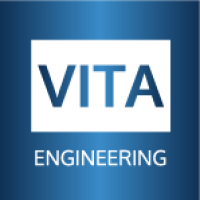
PISTON RING BREAKE-WEAR RIDGE-LINER HONING
Based on our experiences and information collected from different sources, there are several reasons for piston ring breakage and collapse.
Below we are sharing some of them under subject heading for your kind attention and future consideration.
Over lubrication or lack of lubrication of the cylinder unit.
Too high ring groove clearances.
Too high Pmax-Pcomp differential pressure.
Improper installation.
Excessive wear on piston rings and liners.
Excessive wear of CPR/CL grooves.
Engine Operation and adjustment.
Insufficient piston ring and groove clearances.
Wear ridge on liner.
Uneven liner surface.
In this page, we would like to give more information for last two items.
1. WEAR RIDGE ON CYLINDER LINER:
The mechanical wear caused by top (1st) piston ring forms a ridge on the top of the liner which is called as wear ridge.
When the cylinder unit is overhauled, piston crown and rings are renewed, they may positioned a little bit higher compared to the worn elements due to refreshed chromium plating on the bottom of the ring grooves. Thus, top ring gets in contact with the ridge and is forced to bend which causes piston ring breakage within a very short time.
Reference with MAN B&W service letter SL00-383, it is very important to remove such wear ridges in order to maintain/re-establish a good cylinder condition
Removal of the wear ridge can be done specially designed milling machine or grinding with special grinding stone.
Removal of the wear ridge by manual grinding risky to grind working surfaces of the liner which will cause blow-by from the piston ring, hence need special attention and strictly follow up the procedures explained on the service letter by skilled hand.
Below illustration shared with same service letter to explain how proper milling can be done:





2. UNEVEN CYLINDER LINER SURFACE:
The liner surface may change by the time which will affect proper functioning of the piston rings resulting with blow
by or breakage of the piston ring.
Most common problem on liners is losing its circularity after some time due to uneven wear called as ovality.
Another one is changing the profile of the liner surface by wear which usually the top side of liner looks like a
trumpet when viewed from side. Piston ring running on this surface moves in-out as the piston travels along the
liner bore. This movement can cause fatigue and breakage.
And of course, corrosion marks, polishing and scuffing on the liner surfaces should not be ignored.
As per MAN B&W guidance the cylinder liners must be rehoned during every major service operation to rectify the
above problems if any of them is observed.
Below we are trying to highlight some points to bring into question.
HONING OR DEGLAZING?
The target and application of both processes are the same; obtain proper liner surface.
Basically, deglazing is called refreshing the surface for the unworn cylinder liners without changing the cylinder
geometry.
In case there is ovality, score marks, scuffing or ridges on the unit, then it needs to be corrected, this process
called honing which is more time-consuming job than deglazing.
WHAT IS THE TARGETED SURFACE PROFILE AND ROUGHNESS?
Depending on engine type, honing mesh angle between 90°-150°

For the roughness values, maker’s guidance to be followed strictly. Final surface profile should be plateau, hence
together with Ra value, Rvp and Rvk values also to be measured.
WHAT IS THE BENEFIT OF HONING?
1. Remove ovality, deformations and scratch marks in the cylinder liner wall.
2. Produce a mesh of various depths in the material for the purpose of allowing the cylinder lube oil to remain in the mesh grooves for better lubrication.
3. Achieve a fine surface for piston ring contact in a second step (plateau honing).
4. Remove the hardness in the liner wall surface.
WHAT IS THE POINTS TO BE CONSIDERED DURING HONING?
1. Using emery paper is not allowed and no effect to obtain proper surface
roughness and profile even though cosmetic view looks perfect.
2. Check measuring result of the liner surface with surface roughness tester and confirm plateau profile with proper roughness.
3. Different surface profiles can be obtained in same Ra value, hence recommend also checking Rvp an Rvk values to make sure plateau surface profile obtained.
4. Cleaning of the cylinder unit after honing is extremely important, as the residues from the honing process are highly abrasive. The particles can be trapped in the grooves created during honing and in the cylinder lube oil quills. Wiping the surface with a rag is not sufficient, hence cylinder liner walls have to be thoroughly cleaned by honing brushes or similar.





SCUFFING AND SCORE MARKS BEFORE AND AFTER HONING

PROPER CLEANING AFTER COMPLETING THE HONING IS VERY IMPORTANT TO CLEAN THE PARTICLES FROM VALLEYS




